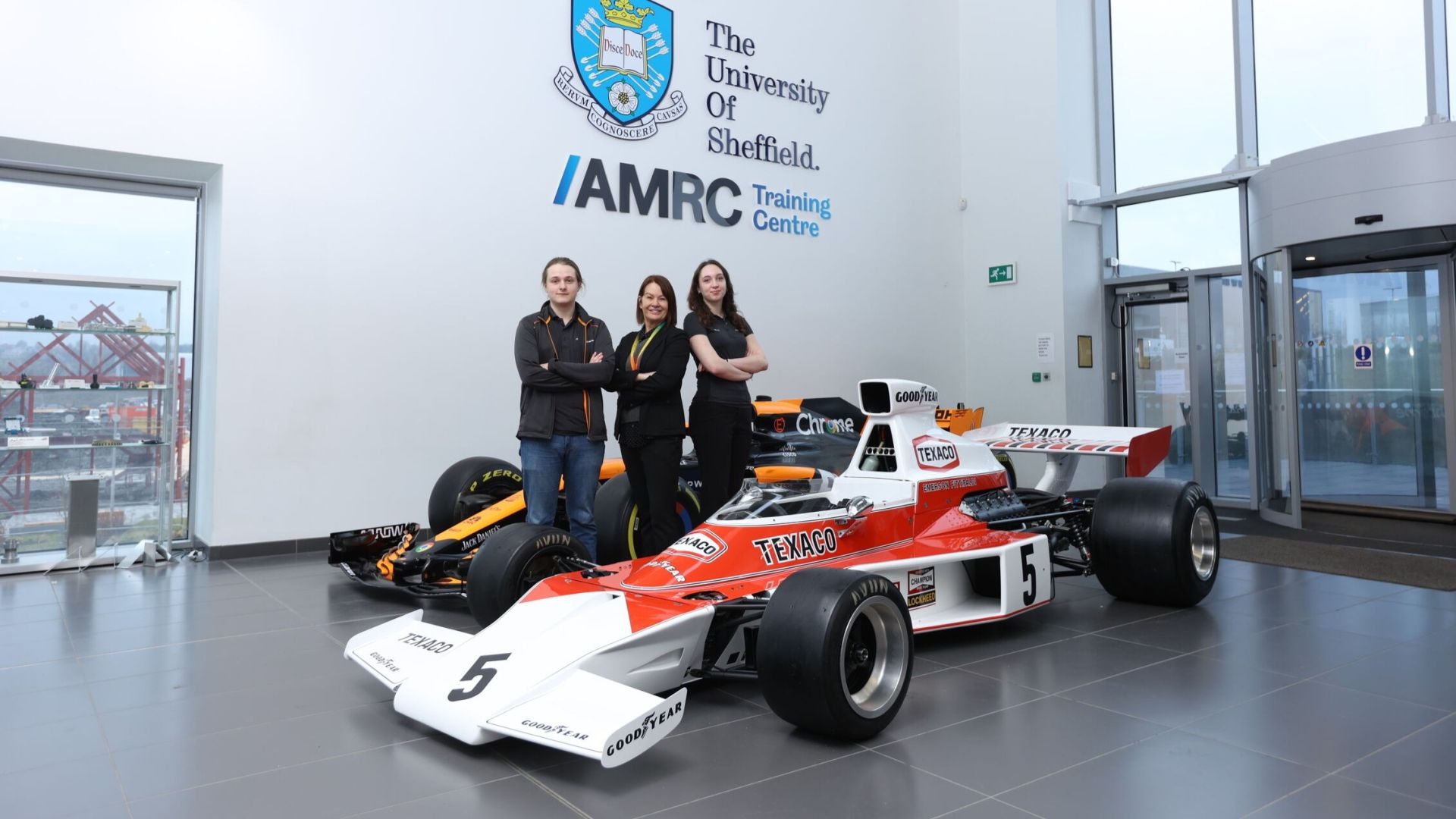Apprentices help revive McLaren Racing’s forgotten icon after 50 years

AMRC Training Centre apprentices have proven their skills in the stunning restoration of McLaren Racing’s iconic M23, chassis number 15 – a sister car to Emerson Fittipaldi’s M23 that brought the Formula 1 team its first ever World Championship 50 years ago.
In 2024, amidst a treasure trove of racing artifacts, a long-lost chassis number 15 was discovered in McLaren’s heritage collection. McLaren Racing’s Heritage team then embarked on a mission to rebuild this never-raced M23 chassis with a clear vision to involve and inspire the racing team’s young engineers.
As part of McLaren’s relationship with the AMRC Training Centre, talented apprentices from the University of Sheffield AMRC Training Centre work with the team at McLaren Racing on composite and metallic manufacturing.
Apprentices Iolanthe Jones, Thomas Fishwick and Tobie Redpath are currently in the third year of their level three machining apprenticeship. They supported the manufacture of crucial components of the M23-15 rebuild, including a new steering wheel – the central part of which is 3D-printed, making it the one modern element on the car – steering release, suspension components, peddles, bracketry, and oil system components.
Meanwhile, second-year composites apprentices at the McLaren Racing’s Composites factory - Catherine Meech, Jasmine Ralfs and Grace Walbeoffe, tackled the complex task of recreating key bodywork elements and the distinctive high-rise airbox, which is a standout feature of the design.
The apprentices tackled a unique set of challenges, including completing missing parts and familiarising themselves with specialised skills required for working with materials like glass fibre – once commonplace in Formula 1, but now rare – to return the car to its former glory.
Ross Hood, production director at McLaren Racing, said: “We partner with the AMRC Training Centre on our composite apprenticeship programme and the metallic machining apprentices working on this project demonstrated a real drive for high performance, something we hold as one of our core values at McLaren Racing.
“The project's greatest value came from bringing together such a diverse group. Our composites and machining apprentices worked alongside engineers, mechanics and our heritage team, creating a strong mini-team within McLaren Racing to bring this icon to life."
The apprentices also had a one-of-a-kind opportunity to meet and spend time with McLaren Racing legend Emmerson Fittipaldi who visited the workshop during the undertaking. This labour of love, blending historical research with technical skill, resulted in the M23-15 being brought back to life – a testament to the apprentice’s talent and the enduring legacy of McLaren.
Apprentices reunited with the iconic M23 for a day when it made an appearance at the AMRC Training Centre to kick off National Apprenticeship Week 2025.
Nikki Jones, director of the AMRC Training Centre, said: “We immensely value our wonderful partnership with McLaren which provides our apprentices with fantastic opportunities.
“We’re incredibly proud of our apprentices and their remarkable achievements on this project as part of their apprenticeship. The project provided them with a unique opportunity to contribute to McLaren Racing's rich racing heritage, a chance to touch motorsport history and shape the future.
“This was a wonderful opportunity for our apprentices to gain hands-on experience, building new skills and a developing problem-solving outlook has been very rewarding. Their work truly highlights the importance of apprenticeships in developing the next generation of highly skilled engineers, giving them real-world experience and igniting a passion for innovation.”
The McLaren M23-15 holds a special place in McLaren's history, symbolising a pivotal moment that inspired the team's engineering philosophy and design simplicity. Over four seasons, it achieved remarkable success, securing 16 wins, 14 pole positions and ten fastest laps. It is a symbol of McLaren's rise to Formula 1 dominance, having powered both Emerson Fittipaldi and James Hunt to world championship titles in 1974 and 1976.
